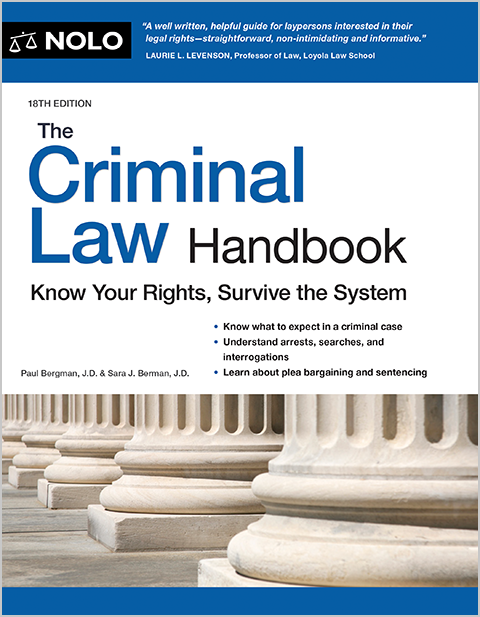If you were disabled during combat, you can get both disability compensation and military retirement.
Combat-related special compensation (CRSC) is a monthly benefit for certain retired veterans with combat-related disabilities. Without CRSC, most veterans who are eligible for both retirement pay and disability compensation have their retirement pay reduced by the amount of disability benefits they receive. This is known as the "disability offset" or "VA waiver."
CRSC allows veterans who are receiving compensation for combat-related disabilities to recover the reduction in retirement pay as a result of the offset. But CRSC only restores the offset for any compensation for your combat-related disabilities, not all of your service-connected disabilities.
Eligibility for Combat-Related Special Compensation
Both active duty service members and reservists can qualify for CRSC. In order to get CRSC, you'll need to meet all of the following requirements:
- You have 20 or more years of service or are medically retired. If you're a reservist, you'll need to be at least 60 years old or retired through Temporary Early Retirement Authorization (TERA).
- You're entitled to or are receiving military retirement pay.
- You've waived your VA pay from your retirement pay.
- You have a combat-related, service-connected disability rated at 10% or more.
A service-connected disability is an injury or illness that started—or got worse—while you were in service. Secondary medical conditions that result from an initial injury can also be service-connected. If your disability isn't rated at 10%, or the VA didn't think it was service-connected, you can appeal the rating or denial of benefits.
Evidence That Can Establish a Combat-Related Disability
Not all service-connected disabilities are related to combat. To qualify for CRSC, you'll need to provide evidence showing that your disability was directly caused by combat-related service. Examples of combat-related service include training that simulates war, hazardous duty, using an instrument of war, or armed conflict.
You can establish combat-related service with the following documents:
- service medical records that show how your injury is combat-related and how severe it is
- official service records such as After Action Reports, Investigative Reports, personnel action requests (like a DA Form 4187) and performance evaluations (OERs & NCOERs)
- decorations and award recommendations, including Purple Heart citations and Combat Action badges
- retirement records, and
- VA decision notices.
Disabilities caused by exposure to Agent Orange, chemical exposure in the Gulf, and other hazards are considered combat-related for the purposes of receiving CRSC benefits.
Training that Simulates War
If your disabling injury directly resulted from activities simulating war, it's considered combat-related. Weapons practice, hand-to-hand combat training, and war games are examples of training that simulates war. Routine physical training exercises don't qualify as combat-related, however.
Hazardous Duty
Hazardous duty means activities such as diving, parachuting, or flying. For example, if you have a back injury that occurred from an improperly packed parachute, or a pulmonary disease that arose from deep-sea diving, you can establish that your disability was combat-related.
Instrumentality of War
Even if your disability didn't occur during an active period of war, you can still show that your condition is combat-related if it was directly caused by an "instrumentality of war." Instrumentalities of war are vehicles, vessels, or devices designed and intended for military use. Qualifying disabilities might include an accident in a military vehicle, an injury caused by a weapon, or an illness resulting from exposure to chemical materials.
Armed Conflict
Your disability is combat-related if it was directly caused by the armed conflict you were engaged in. It isn't enough if your disability was caused while you were serving during a period of war or near armed conflict. You must be able to specifically show that your injury or illness was directly caused by your involvement in the armed conflict.
In addition to being actively engaged in combat, armed conflict includes an occupation, raid, or other action against a hostile nation. Likewise, it includes being a POW or being detained by the enemy.
How Much Does CRSC Pay?
Because CRSC pay is based on disability compensation rates, the amount you'll receive is based on your disability rating (along with additional factors such as whether you're married and have dependents).
You may also be entitled to CRSC retroactive benefits ("back pay"). Retroactive payment dates are generally based on the date you became eligible for CRSC benefits, as determined by your branch of service.
You can receive a maximum six years' worth of retroactive pay, however. So if you apply for CRSC ten years after the VA starts paying you disability compensation, your CRSC retroactive payment won't go back further than six years.
How to Apply for Combat-Related Special Compensation
To apply for CRSC, you need to fill out DD Form 2860, Claim for Combat-Related Special Compensation, and submit it to your branch of the military. You can check the address of your uniformed service below.
AIR FORCE and SPACE FORCE
United States Air Force
Disability Division (CRSC)
HQ AFPC/DPPDC
550 C St. West
Randolph AFB, TX 78150-4708
ARMY
Department of the Army
US Army Human Resources CMD
ATTN: AHRC-PDP-C (CRSC)
1600 Spearhead Division Ave., Dept 420
Fort Knox, KY 40122-5408
You can also send your CRSC Army application by email at [email protected], or fax it to 502-613-9550.
COAST GUARD
Commander (PSC-PSD-MED)
Personnel Service Center, Attn: CRSC
2703 Martin Luther King Jr. Avenue SE
Washington, DC 20593-7200
You can send any questions about applying for CRSC to the Coast Guard at [email protected].
NAVY and MARINE CORPS
Secretary of the Navy
Council of Review Boards
Attn: Combat-Related Special Compensation Branch
720 Kennon Street SE, Suite 309
Washington Navy Yard, DC 20374-5023
How Long Does It Take to Be Approved for CRSC?
Once you submit your CRSC application, it takes about 60 to 90 business days for your claim to be processed. If your application is approved, the Defense Finance and Accounting Service (DFAS) will perform an audit to see if you qualify for back pay.
If your application is denied, or you disagree with the amount of benefits you were awarded, you can file an appeal ("reconsideration") with your military branch.
AIR FORCE. You'll receive a reconsideration request form in the mail along with your decision letter. Send it along with any new evidence to the following address:
HQ AFPC/DPFDC
550 C Street West
JBSA Randolph, TX 78150
ARMY. Print out the CRSC Form 12e, Reconsideration Request Form, and mail it, along with any new evidence, to the following address:
Department of the Army
U.S. Army Human Resources Command
Attn: AHRC-PDP-C (CRSC)
1600 Spearhead Division Avenue, Dept. 480
Fort Knox, KY 40122-5408
You can also fax Form 12e to 502-613-9550 or send it by email to [email protected].
COAST GUARD. You don't need to fill out a special form to request reconsideration from the Coast Guard. Just send a letter and any new evidence to the following address:
Commander (PSC-PSD-MED)
Personnel Service Center, Attn: CRSC
2703 Martin Luther King Jr. Avenue SE
Washington, DC 20593-7200
Or you can email your request to [email protected].
NAVY and MARINE CORPS. Print out the CRSC Reconsideration Request Form or call 877-366-2772 to have the form sent to you by mail or email. Mail the form (along with any new evidence) to the following address:
Secretary of the Navy Council of Review Boards
Combat-Related Special Compensation Board
720 Kennon Street SE, Suite 309
Washington Navy Yard, DC 20374-5023
You can also send them by email to [email protected].
You may be eligible for both CRSC and another, related benefit called concurrent retirement and disability pay (CRDP). For more information, see our article on restoring VA disability offsets.
Talk to a Lawyer
Need a lawyer? Start here.
How it Works
- Briefly tell us about your case
- Provide your contact information
- Choose attorneys to contact you
- Briefly tell us about your case
- Provide your contact information
- Choose attorneys to contact you

